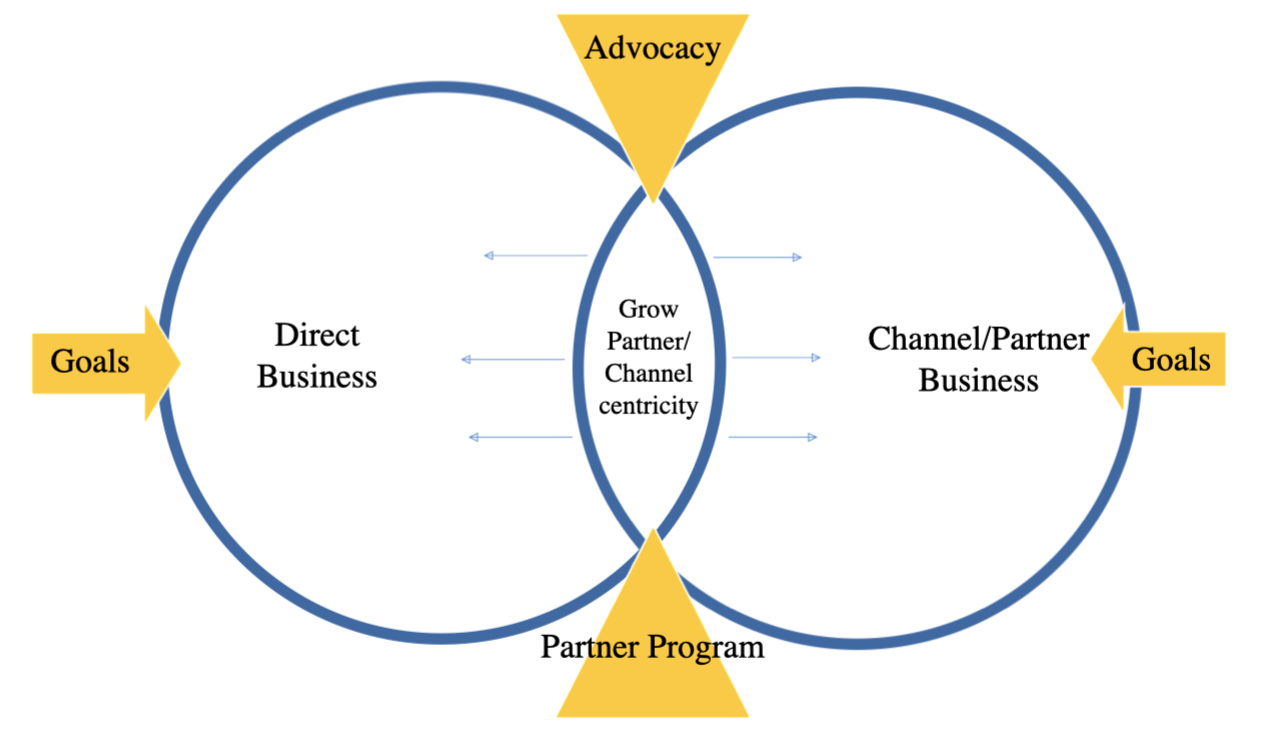7 steps ensure top-down strategic alignment between business strategy and partner marketing
Aligning partner marketing with your organization's overall business strategy and specific strategic initiatives is essential for driving success and maximizing the value that partners bring to an organization.
However, this alignment can often be challenging due to a lack of understanding and buy-in from internal stakeholders.
Before exploring practical strategies to bridge this gap, let's first clarify business strategy.
Harvard Business School defines Business Strategy as
“The strategic initiatives a company pursues to create value for the organization and its stakeholders and gain a competitive advantage in the market.
This strategy is crucial to a company's success and is needed before any goods or services are produced or delivered.”
Does your organization value partner as part of your overall strategy?
If the answer is “no” or “partly” then it will hinder the effectiveness of any marketing programme. There is a need to establish clarity on how partners add value and how giving them marketing support, will benefit the overall business strategy.
Add to this competing business priorities and a lack of clear direction regarding partner engagement, and the issue is further exacerbated, as the IDG Partner Marketing 2022 report highlights below.

This lack of understanding and strategic alignment is equally prevalent among vendors, systems integrators, and service providers.
Having the Basic Foundations in Place
Successfully implementing partner marketing requires a different mindset and supporting infrastructure. This includes different processes, incentives, pricing, contracting, and operational technology specific to indirect business models.
While this article does not focus on the operational and sales aspects of partner engagement, we emphasize the importance of having these fundamental tools, processes, and mindsets in place to enable effective partner marketing collaboration.
Driving a Channel-Centricity Model:
The Coterie Community members have developed the Channel Centricity Model to demonstrate how partner marketers can align their strategy with the overall business goals and have suggested some practical steps.

This model emphasizes the intersection between direct and indirect business goals. With this in mind, the 7 steps below focus on how you can implement and improve partner marketing to contribute to your goals.
7 steps to increase partner channel success for your business
The aim is to expand that shared space where the circles overlap, by implementing
the following seven-step strategy:
1. Clear Understanding of Business Goals:
Partner marketers and channel leaders must have a deep understanding of the organization's top-line business strategic initiatives. If cost savings are a priority, then partners can significantly drive down costs compared to outsourcing, and partner marketing needs to work with channel/partner sales to advocate this message internally. Clearly articulating how partners align with the business goals, justifies the partner marketing efforts.
Did you know...
In a 2022 survey by IDG, nearly 70% of marketers at companies that have a documented partner strategy described the value as great, compared to 38% at those with no documented strategy.
Strategy-driven marketers also reported success over the past 12 months by a 58%-to-45% margin over those without a documented strategy.
2. Role-Specific Value Communication:
All stakeholders involved in partner marketing, including executives and team members, need to understand the value that partner marketing brings to their roles. The channel leader and partner marketing lead must demonstrate how the partners/channel are relevant to the CEO, CFO, and CCO, fostering alignment and support from the top down.
Clearly communicating this value ensures that everyone recognizes the benefits and actively supports the alignment efforts.
3. Partner Alignment with Executives:
Establishing alignment between partners and executives is crucial. Partners should have access to influential executives to ensure their input and perspective are considered in strategic decisions. This alignment empowers partners to have a meaningful impact on the business direction.
4. Accountability and Ownership:
Assigning an executive sponsor to each partner helps ensure accountability and drive business alignment. By involving executives in Quarterly Business Reviews (QBRs) and fostering a deep understanding of partner operations, alignment and collaboration are enhanced.
This approach is equally relevant for systems integrators, where mirroring the executive sponsorship model can facilitate engagement.
5. Shared Goals and Compensation:
Aligning direct and indirect remuneration and compensation structures is essential for eliminating conflicts and fostering collaboration. Establish shared goals, where a portion of revenue is directed through the channel. Clearly identify any direct sales exceptions and ensure that all team members are rewarded for collaborative efforts.

6. Prioritising Partners:
Knowing which partners to work with is the Holy Grail of partner marketing and making sure the choice aligns with the business strategy is critical. Some organizations have hundreds or thousands of partners that they could work with and invest in, but the marketing dollars they spend on them do not always see a good return.
With limited marketing resources and budget, and tougher ROI criteria they need a smarter approach. Consciously selecting partners based on strategic alignment and balancing with engagement is important – read more on this topic.
Organizations with partner-focused efforts invest 40% of their overall marketing budget in that area
- IDG 2022
7. Partner-Centric Approach:
Shift the focus from competing with partners to a partner-centric mindset. Emphasize how partnership marketing contributes to the success of all parties involved, fostering a cooperative approach rather than a divisive one.
Smart Insights Business members can review a more in-depth guide to Channel and partner marketing improvement.
Partner marketing strategy, in conclusion:
Aligning partner marketing with the overall business strategy requires a concerted effort and a commitment to advocacy - communication, understanding, and shared goals. By implementing the strategies outlined in this paper, organizations can drive top-down alignment, maximize the value of partner relationships, and achieve greater success in their partner marketing endeavors.


Helen Curtis is the founder of Coterie Marketing. She is a Partnership and Proposition Marketing expert and trainer with twenty-five years’ experience of marketing and sales in B2B and B2C IT and Telecoms.
Helen is specialized in the challenges of proposition and collaborative marketing for ten years, including working on joint strategic marketing plans, best practice for collaborative programmes, defining propositions, leading campaigns, and measuring return on investment for companies for major systems integrators and vendors across security, CRM, UC, and networking.
Helen has lectured at the University of Huddersfield and Coterie Marketing has won and been shortlisted for many awards including the Chartered Institute of Marketing best partnership marketing, B2B Marketing Best Multi-Channel programme, B2B Content Award winners.










